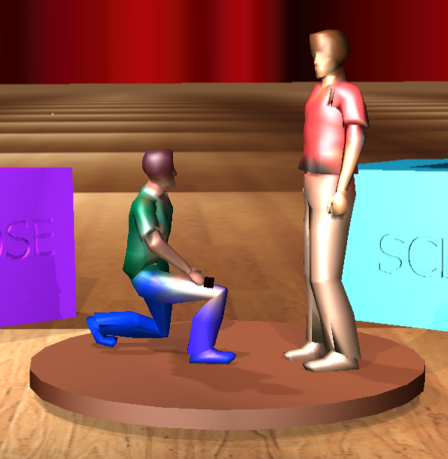For my final capstone project as a dimensionator, I have created an educational board game titled “Flip and Tell”. In this board game students will learn about the communication concept of self-disclosure and how to apply it to realistic scenarios that
they face on a daily basis. Students will share how they would handle themselves in various scenarios and be judged for the answers by their peers. The hope is that students learn about self-disclosure and its alternatives as well as the moral implications that are associated with their actions.
According to a PowerPoint provided by the communication studies faculty at Fullerton College, self-disclosure is used to help control and maintain relationships that we hold with others. It does this by providing the speaker with the opportunity to share information about themselves in order to further their relationship with others. Though self-disclosure is completely necessary in furthering our relationships between one another, there are moments in which we hesitate to express our true feelings. In these cases there are a variety of different options that one can use as an alternative to open self-disclosure.
The four alternatives that I touch upon in my game are silence, lying, equivocating (making vague statements), and hinting. Each of these various alternatives can be used to avoid awkward situations, but do have some moral implications that one must consider. For example, getting caught in lie may cause more harm to your relationship with a person than simply stating your mind. It’s a constant balancing act in which we all do and this is why I feel it is a concept that would lend itself quite well to a board game.
For this project, I wanted to create a game that brought the aspects of board games that I love, to the classroom. Personally, I feel that games are at their most fun a whenever they cause the players to bond with one another, so in creating my game “Flip and Tell” I wanted to create not just an educational game but a bonding experience for students. With that in mind, I decided to structure my game as more of a card based game that utilizes 3D elements, rather than a more traditional “move to X to win” style of game. From my experiences card based games, when done correctly, feel much more intimate than their counter parts. Your focus is turned to the other players, rather than a bright and colorful game board and pieces. However, I did want to think of a creative way I could incorporate 3D visualizations into the game so I decided to create a custom die and play tokens. These objects were solely created by using the LeoWorld software, and were quite fun to make.
The die I created was customized to have an “M” or“F2F” on each of the faces, representing how the means in which the players would respond in the given scenario. If player rolls an “M” they would then need to base their reaction as if the scenario was happening through a mediated means of communication. When player rolls a “F2F” they then act as if the scenario is happening while face to face with whoever is listed on the card. However, while writing my scenarios I found that certain scenarios seemed to naturally only occur in specific circumstances. So to counter this, I made a few cards with the means of the communication predetermined. If I were to do this again I would make the scenario listed on my cards less specific, and hopefully that would fix this problem.
I am extremely proud of how my tokens turned ended up. I went through three different styles of tokens before coming up with the final design used in my game. The first two sets of tokens were way too small and too plain for my liking, so I dramatically altered the design in my third trail set. While I loved the overall look of the tokens in my third trial set, but their design made them difficult to 3d print. So, I mixed together all three of my prototype tokens to create the final set used within my game. These five tokens act as the 3D centerpieces for my game, by providing players with an interesting and tangible object to help memorize self-disclosure and its alternatives. Despite the difficulties I faced in creating these object, I’m overall very proud with how they turned out.
Along with the 3D aspects of my game I also created PDFS filled with my various scenario cards, instructions, and scorecards for the game. Since my game relies heavily on the scenario cards, they were the aspect of my game that I put the most effort into creating. In total I created 56 scenario cards to be used in the game. These cards range in topics from the silly, to the serious covering all of the various scenarios that students face. Though I do feel that I should have simply stuck with a single theme in the cards, that way there is a sense of continuity between them. All though it was a challenge creating all of these cards, they were honestly a blast to make and I’m happy with the final product.
It is amazing to me that in just four months time, I have changed from a simple college student who knew nothing about 3D technology to a true dimensinator creating objects in 3D spaces. My hope is that my game will act as an example in how this type of technology can be used in academia. All of the components of the game can be downloaded from our project’s Google Drive Here.





















